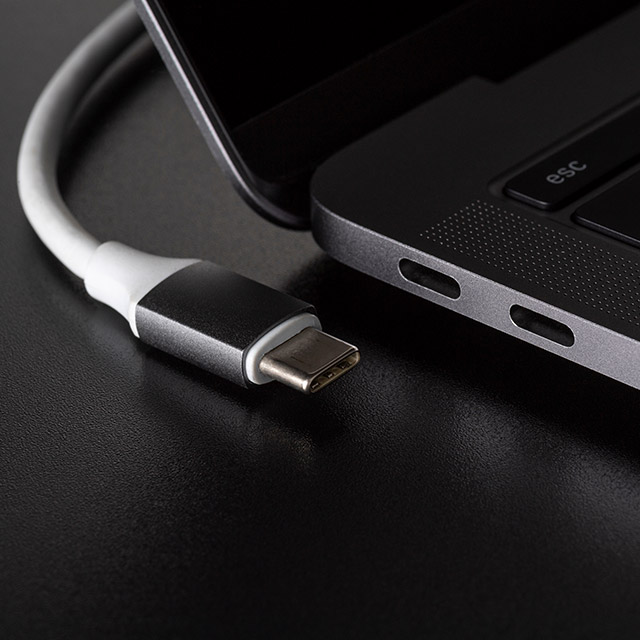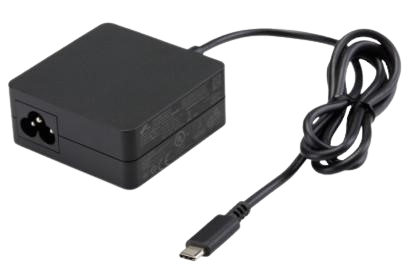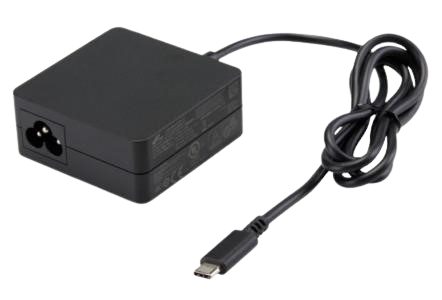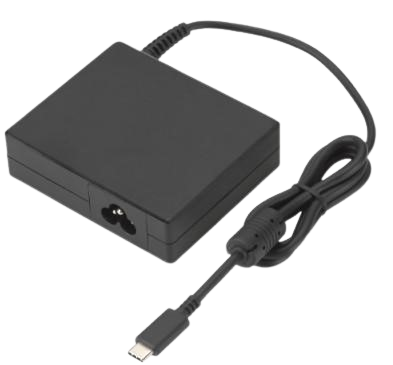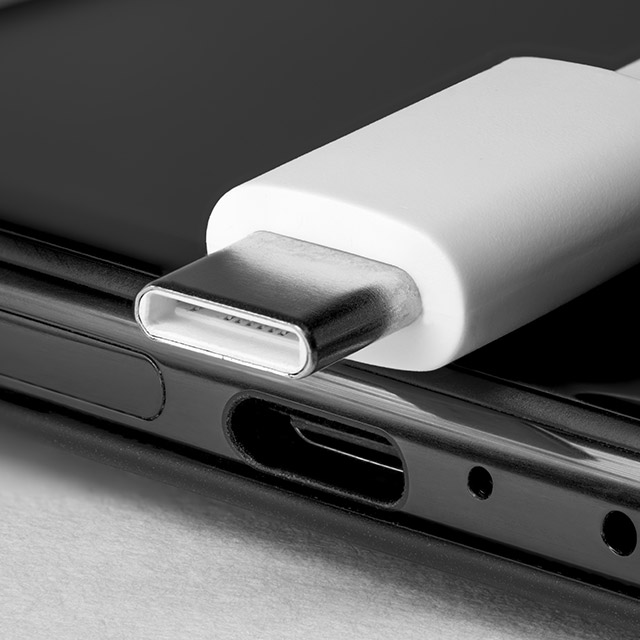What Is USB-C (Type-C)? Advantages Explained & How to Choose the Best Type-C Charger!
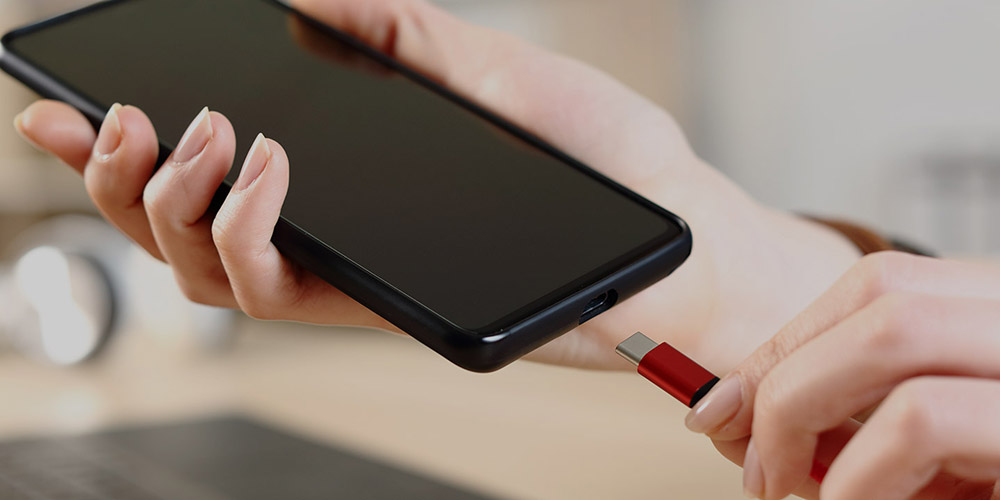
Overviews
- What is USB-Type C?
- What benefits can USB Type-C provide?
- What is a USB-C Charger?
- What are some considerations when selecting USB Type-C chargers or products?
- FAQs about USB Type-C Chargers
- FSP USB Type-C PD Charger Features
- Recommending FSP USB Type-C PD chargers.
- Conclusions
Author: FSP Group
In today’s rapidly evolving 3C technology landscape, especially after the digital transformation accelerated by the pandemic smartphones, laptops, and tablets have become indispensable in our daily lives. The charging interfaces of these devices have also undergone major changes. The once-common Micro-USB and Lightning connectors are now quickly being replaced by USB-C (Type-C).
As the Type-C interface becomes widespread, it not only represents faster performance and better efficiency but has also become the foundation of fast-charging standards such as USB Power Delivery (USB-PD). This small USB connector supports high-speed data transfer, high-power charging, and multifunction output, and is steadily becoming the new standard for laptops, smartphones, and other 3C devices.
In this article, we will break down what USB-C is, its key advantages, and how to choose the most suitable Type-C charger and cable. This guide will help you evaluate efficiency, safety, and compatibility among numerous options and understand why this tiny connector has reshaped modern charging standards.
What is USB-Type C?
USB-C, also called USB Type-C, refers to a specific specification of USB connectors. USB‑C it is one form of the Universal Serial Bus (USB) hardware interface and is also currently the most popular charging port for Android cell phones. The emerge of USB-C came after the extensive acceptance of the USB 3.1 and USB-PD protocols when major mobile phone and tablet brands successively started to use then between 2013 and 2014, and Apple’s Macbook Pro also launched with Type-C ports in 2015. As of today, as noted in the “2021 USB Type-C Report” published by Ombia, approximately 80% of notebooks and 50% of smart phones come with the Type-C interface.
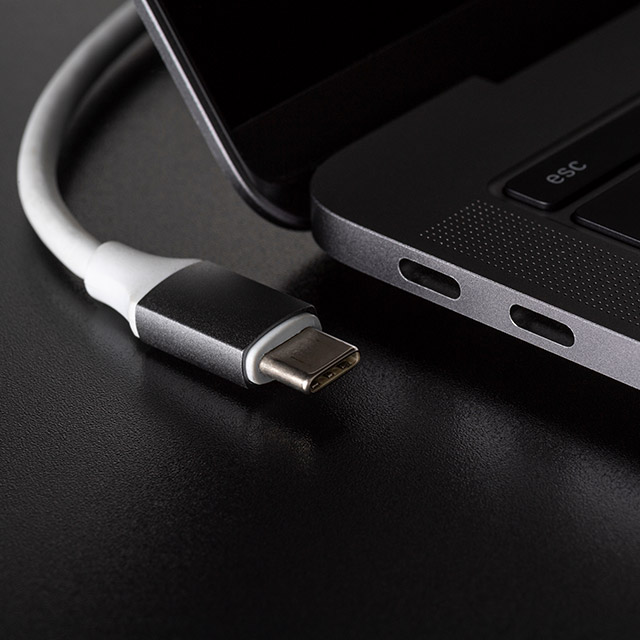
Figure: Diagram of Type-C Port
What benefits can USB Type-C provide?
How did USB Type-C become so popular so quickly? We believe Type‑C’s rapid popularity can be attributed to the following reasons:
- Reversible connector: USB Type-C connectors have identical upside and downside terminals which allow it to be plugged in with either side. As compared with legacy Micro-B which requires identifying the up-side and down-side during plugging-in, USB Type-C is obviously much easy to use.
- Mature technology supporting quick charge and high‑speed transfers: As time passed, USB-PD (USB Power Delivery) matured gradually. Simply put, USB-PD is the solution which passed the unified charge protocol stipulated by USB-IF to support “charging” functionality, hence achieving a 2-in-1 outcome in combination with existing data transfer functions. As technologies continuously evolve, both transmission and charging speeds have increased significantly when compared to legacy connectors.
- Policy-based Support: In October 2022, the EU Parliament formally passed the “Common Mobile Charger” legislation which stipulates that from end‑2024, all mobile electronic products sold in EU member countries shall be equipped with USB Type-C ports to achieve consumer convenience, monetary savings, as well as environment protection.
- Power Delivery Increase: The USB PD 3.1, introduced in 2021, has raised the maximum power to 240W and the maximum voltage to 48V. With the increase in power and current transmission, it benefits the charging of large devices such as laptops. High Compatibility: Supported by the EU's single charging interface initiative, USB Type-C is gradually becoming the mainstream charging interface in the market. Many electronic devices are starting to incorporate USB Type-C into their USB Hub designs. This makes it more convenient for users to connect various devices together without the hassle of finding different types of cables.
- Enhanced Audio-Visual Transmission Capability: With support for high-speed transmission, large audio-visual files can be transferred via USB Type-C. In recent years, various transmission protocols have started using USB Type-C as the transmission interface, including DisplayPort, HDMI, ThunderboltTM, and more. The USB Type-C audio-visual interface uses DisplayPort Alt Mode technology, supporting resolutions above 4K while maintaining USB signal and charging functions.
Based on the above, as USB-C ports develop and popularize, all notebooks, tablets, mobile phones and even versatile domestic apparatuses will be able to achieve charging and/or data transfer in the future. With unified cable specifications, consumers will no longer have to face the hassle of dealing with a wide variety of cables.
What is a USB-C Charger?
USB-C, also known as USB Type-C, is the next-generation USB interface introduced in 2014, following Type A and Type B. In the past, Type A and Type B connectors were large and asymmetrical, whereas the Type-C connector is smaller and uses a symmetrical design, allowing it to be plugged in both ways, making it more convenient to use. Additionally, Type-C supports high-speed data transfer, enabling fast charging and the transfer of large files. With the promotion of the EU's unified charging interface legislation, most electronic products on the market now use USB Type-C as their charging interface, making it the most popular charging interface today.
What are some considerations when selecting USB Type-C chargers or products?
So, how do we select a suitable product? This must be a common challenge facing most consumers purchasing USB Type-C products: different chargers of different shapes and sizes confuse people, and choices which were made on the basis of price or intuition would leave many regretting not having done enough homework before shopping. In light of this pain point, we have prepared a few key points here to help consumers better learn how they can choose well.
Consideration 1: Choose a reliable brand
Charging a 3C product using a non‑qualified charger produced by an unknown manufacturer may result in accidents during the charging process and further damage your product. When buying a USB Type-C product, it is therefore essential that you select a charger produced by a reliable and certified manufacturer.
Consideration 2: Data transfer speed
Data transfer speeds are also a key consideration as it is difficult to differentiate whether the product adopts USB 2.0, 3.0 or 3.1 specifications, which have transfer speeds of 480Mbps, 5Gbps and 10Gbps, respectively, simply from just looking at the product. As huge differences may be experienced during use, one must therefore carefully choose what you purchase so that it is most suitable to your needs.
Consideration 3: Personal habits in usage
Everyone have different habits when using chargers, and some prefer to use a mobile phone whilst charging it. In the above scenario, one must consider whether proper protection is provided between the connectors and the transfer wire for ensuring both prolonged and safe use. Furthermore, as not all the existing products support USB Type-C, it is absolutely essential to verify the specification of the product on the other end of the transfer cable, so that you will not end up in an awkward situation by buying a charging device having a USB Type-C port on both ends which you cannot use.
Consideration 4: Support for Fast Charging
An improvement in charging speed is a great time-saver for users and is an important factor when choosing a USB Type-C charger. Fast charging refers to accelerating the charging process and reducing charging time within the device's safe load range by using a high-power charger. Currently, the two major fast charging technologies are PD (Power Delivery) fast charging and QC (Quick Charge) fast charging. When selecting a charger, users can first check if their device supports fast charging technology.
| Comparison of Fast Charging Technologies | ||
|---|---|---|
| Power Delivery(PD) | Quick Charge(QC) | |
| Developer | USB-IF | Qualcomm |
| Latest Version | USB PD 3.1 | QC 5 |
| Maximum Current | 3A、5A | 3A、5A |
| Maximum Power | 75W~240W | 100W+ |
| Features | Supports a wide range of device types, iPhone fast charging standard | Supports many Android phones, offers 0-50% charge in just five minutes |
| Source:Qualcomm | ||
Consideration 5: Compliance with Safety Regulations
To avoid overcharging and burning due to materials used in chargers, devices, or cables that do not meet the required standards, or accidents caused by excessive voltage loads, the USB-IF association has introduced a certification program for the safe use of USB Type-C. This includes establishing design safety standards for USB Type-C and incorporating security certificates to block malicious programs. When selecting USB Type-C products, it is essential to consider whether the product has passed safety standards certified by relevant organizations or choose products from reliable brand manufacturers.
Consideration 6: Choice of Cable Types
In addition to focusing on charging speed, it is also crucial to use Type-C cables that can handle high wattage. Cables supporting current above 5A can fully deliver charging power. Considering the practicality and durability of the cables, users should avoid improper pulling or excessive bending of the cables. Additionally, when choosing cables, users can consider different materials such as plastic, silicone, or braided materials based on price and durability.
FAQs about USB Type-C Chargers
Here are some frequently asked questions about USB Type-C which may help you quickly find answers.
Q: What’s the difference between USB PD & USB QC?
A: There are two types of USB quick charging: PD and QC. The main difference between PD and QC is the former reaches 100W whereas the latter capable of reaching 240W. Likewise, Apple peripherals are not QC‑charging applicable, hence iPhone or MacBook users must be careful and avoid buying quick chargers which cannot offer the expected performance.
Q: What’s the input and output power of USB Type-C?
A: As of now, most USB Type-C charging cables are rated 100W SPR (Standard Power Range); according to USB Type-C 2.1 specification issued by the USB-IF in 2021, the maximum power can reach up to 240W EPR (Extended Power Range). The consumer may find a USB-IF certified “EPR 240W” logo on the product.

Q: Is there a certification organization for Type-C chargers?
A: Yes, a Type-C charger is deemed as an independent external PSU, therefore adopts PSU Safety Standard Certification (simply put, Safety Certificate) under IEC 62368. Safety standards in different regions and countries are all based on IEC 62368, but with slight differences. The most common regional Safety Certifications are UL (USA), TUV (EU), JET (Japan), and CCC (China). The main test items in these safety certifications include whether health hazards occur under improper operation conditions of the product. PSUs which have passed more reginal certifications will certainly provide relatively higher protection in terms of safety.
Q: Are chargers classified by the power consumption the same way as household electric apparatuses?
A: Yes. In today’s society which values environmental protection, achieving minimal power consumption and high performance is the mainstream trend amongst electronic products. Excessive power consumption both impacts the environment and damages the electronic product. We kindly suggest you select products with have a DOE‑rated Efficiency Level.
FSP USB Type-C PD Charger Features
FSP’s USB Type-C PD chargers offer high-power output, universal Type-C compatibility, wide-voltage support, global usability, robust safety protection, portable design, and multi-device support.
1. FSP USB-C / Type-C Supports USB-PD Fast Charging
Supports the USB Power Delivery (PD) protocol, providing fast charging solutions for smartphones, tablets, and laptops.
2. Multiple Wattage Options: 45W / 65W / 100W
Offers various output levels—from mobile devices to high-power laptops—such as 45W, 65W, and 100W, so users can choose based on device needs.
3. Wide-Voltage Input & Global Compatibility
Select models support AC 90–240V and interchangeable international plugs, making them ideal for business travel and overseas use.
4. Safety Protections & International Certifications
Many models include short-circuit, over-voltage, over-current, and over-temperature protection, together with TÜV / IEC certifications for safer charging.
5. Slim, Portable, and Highly Compatible
Compact foldable-plug design and high-power density allow one charger to power multiple devices. Compatible with various USB-C devices, including MacBook and Nintendo Switch.
Recommending FSP USB Type-C PD chargers.
With all the above, let’s directly share with our readers three Type-C chargers the write has reviewed to help our readers quickly select a product that meets their own requirements.
(1) FSP045-A1BR: This model supports up to 45W output for charging notebooks, tablets, mobile phones or even a Switch gaming console. This model, on top of its 9 integral certifications, also supports 100~240Vac.
Figure: FSP045-A1BR (Product Details)
(2) FSP065-A1BR3: This charger is the A1BR enhanced: In addition to supporting multiple electronic devices and 100~240Vac, the A1BR3’s main difference lies in its maximum 65W output for increased charging efficiency.
Figure: FSP065-A1BR3 (Product Details)
(3) FSP060-D1BR4: As compared to the above models, the D1BR4’s main difference lies in its thinnest C6 adapter’s form factor of 92 x 77.3 x 25.4mm, hence making it a perfect choice for consumers who travel with many electronic devices.
Figure: FSP060-D1BR4 (Product Details)
Conclusions
After reading this article, we hope our readers may have clearly understood the benefits of Type-C, as well as how they can select suitable cables and adapters. Readers who have related needs can, after reading this article, not only seek find a lifestyle which fits themselves best, but also find cables and adapters which best fit their 3C products.
About FSP
FSP Group is one of the global leading power supply manufacturer. Since 1993, FSP Group has followed the management conception “service, profession, and innovation” to fulfill its responsibilities as a green energy resolution supplier.

